Image
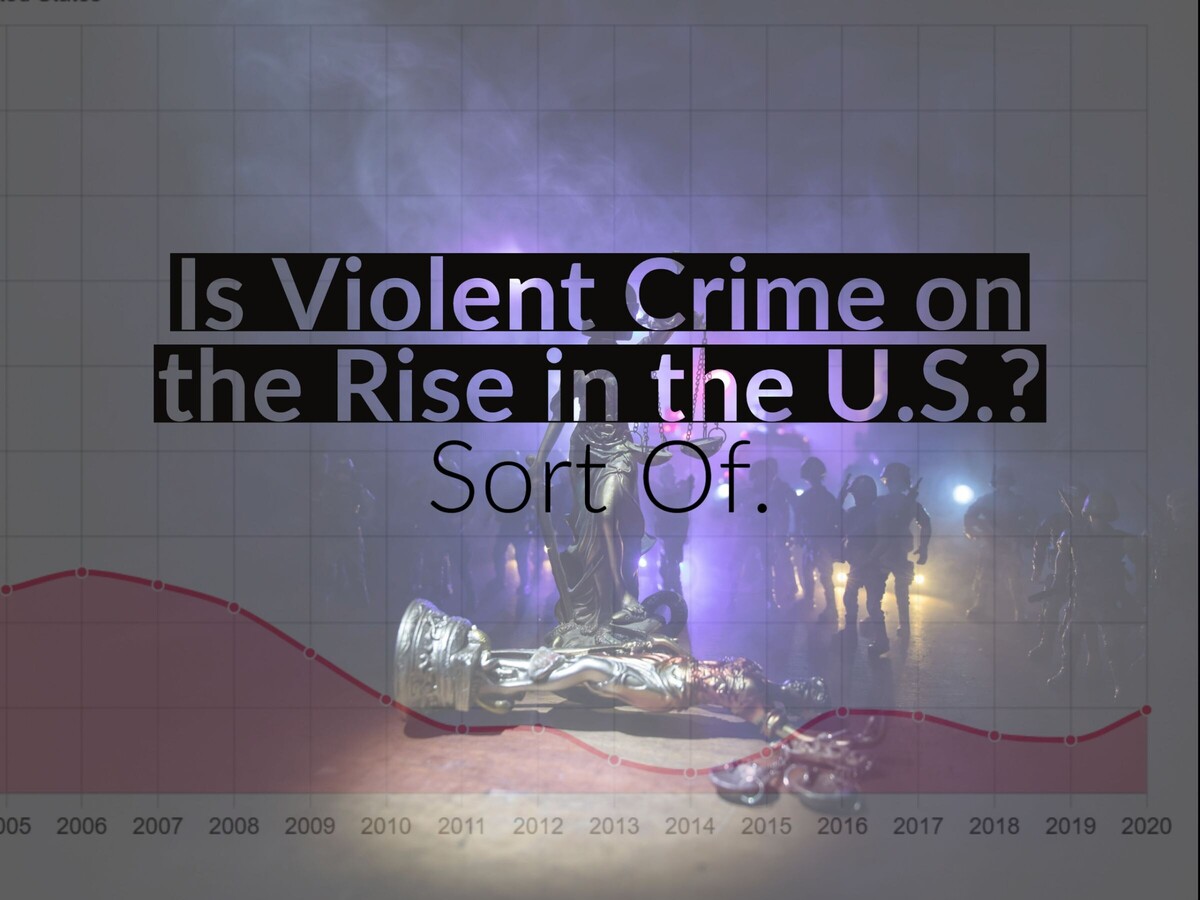

If you’ve turned on the news within the last year you’ve likely heard about the “nationwide increase in violent crime.” News stations report endlessly on the “surge in violent crime” and on quick to point the finger. But is this just the ‘80s all over again? A political talking point? Let’s take a look at violent crime in the U.S.
So, is "violent crime" on the rise in the U.S. – short answer, is sort of.
Some violent crime rates rose significantly from 2019-2020, most notably the murder rate which rose by almost 30%. The rates of other crimes, like robbery and property crime, decreased.
Though the rates of murders, as well as assaults, rose, they remained well below the high point seen in the early 1990s.
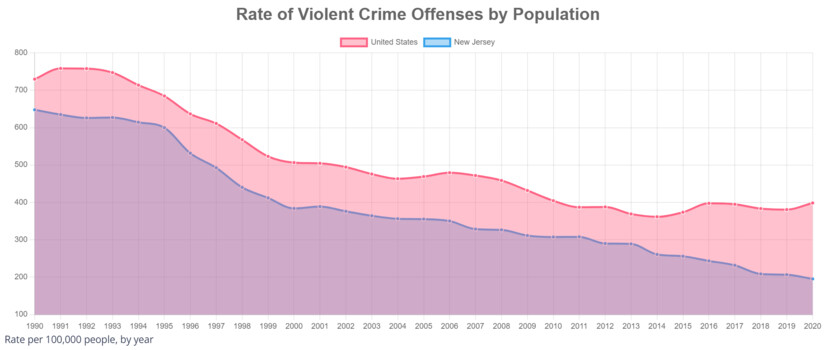 Rate of violent crime offenses by 100k people /year. From PEW Research Center.
Rate of violent crime offenses by 100k people /year. From PEW Research Center.By 2021, the 2020 spike in violent crime had already leveled off a bit. But even in the places where violent crime increased, why and how rates rose is more complex than most of the theories currently being thrown around.
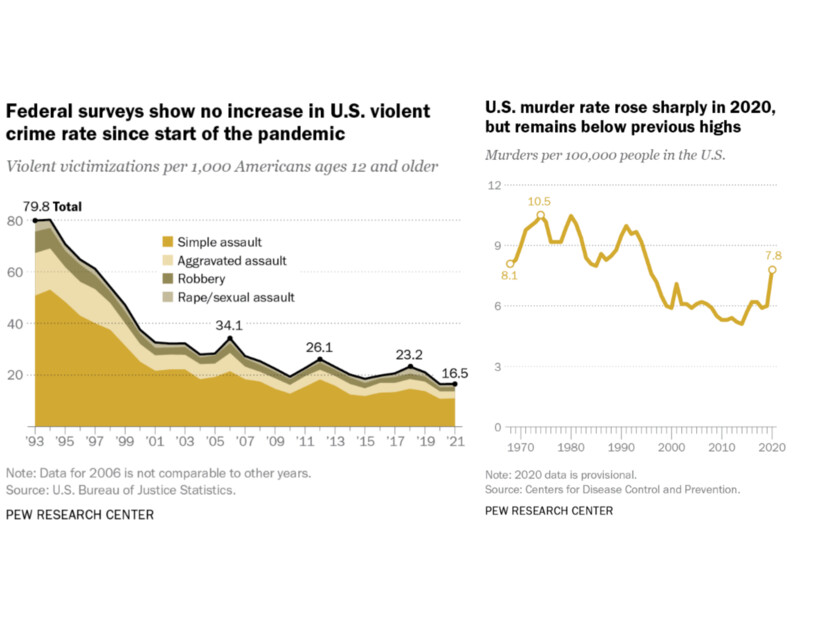
Myth 1: Progressive prosecutors are to blame.
Many politicians have claimed that progressive district attorneys have contributed to the rise in crime over the past few years. In reality, there is no evidence to suggest progressive prosecutors have contributed to the rise in violent crime. As a matter of fact, there is substantial evidence that progressive policies like treatment programs don’t contribute to violent crime rates at all.
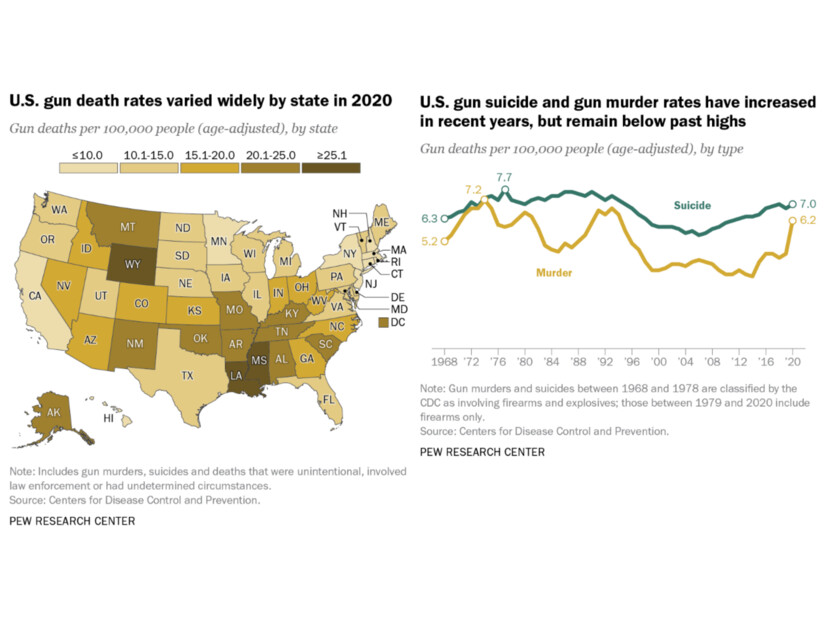
For example, a 2021 report from the Law & Economics Center at George Mason University looked at data from 35 jurisdictions with so-called “progressive prosecutors,” and found that there were no significant effects of these reforms on violent crime rates.
Myth 2: Blue states, cities, and towns have higher crime rates.
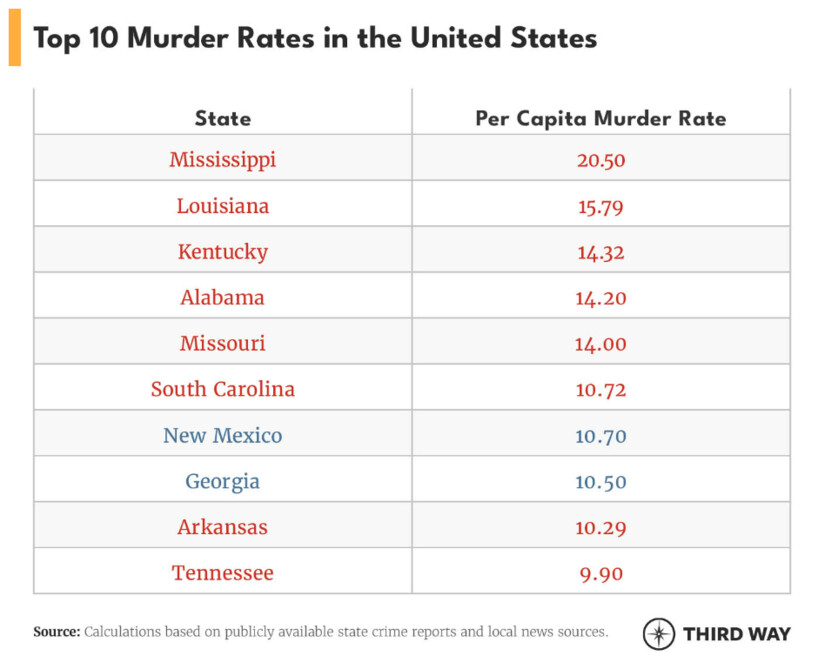
In reality, the data shows that crime rates in blue cities aren’t any higher than crime rates in red cities. In fact, in some red regions, it’s the opposite. Rates of gun violence have historically been much higher in the southern U.S. than in the northeast.
According to an analysis of data from the think tank Third Way, 8 of the 10 states with the highest murder rates in the U.S. are red. Additionally, data showed that rising violent crime rates across U.S. cities had no connection to a city's political affiliation. Moreover, the increase in murder rates wasn’t unique to cities.
Murder rates rose around the country from 2019-2020 in red and blue cities, towns, suburbs, rural communities, and everywhere in between. Despite this evidence, many politicians have continued to pedal another false narrative, and that leads us to our third myth.

Myth 3: Anti-policing protests caused crime to spike.
After 2015, there was a narrative that emerged around the so-called “Ferguson Effect” – essentially, in the wake of the Black Lives Matter movement, people claimed police were holding back out of fear. However, there is no reason, evidence or otherwise, to suggest this “effect” is anything more than an unjustified assumption.
So we know what isn’t causing violent crime to increase, but what is?
The answer is complex, but the data points to a few possible factors. One factor is guns.
In 2020, gun sales went through the roof reaching an all-time high, and coincidently more than 79% of murders in 2020 were committed with a firearm – the highest ever reported to the FBI going back to 1960.
Additionally, the number of guns used in a crime within one month of being purchased rose from 13% in 2019 to 23% in 2020.
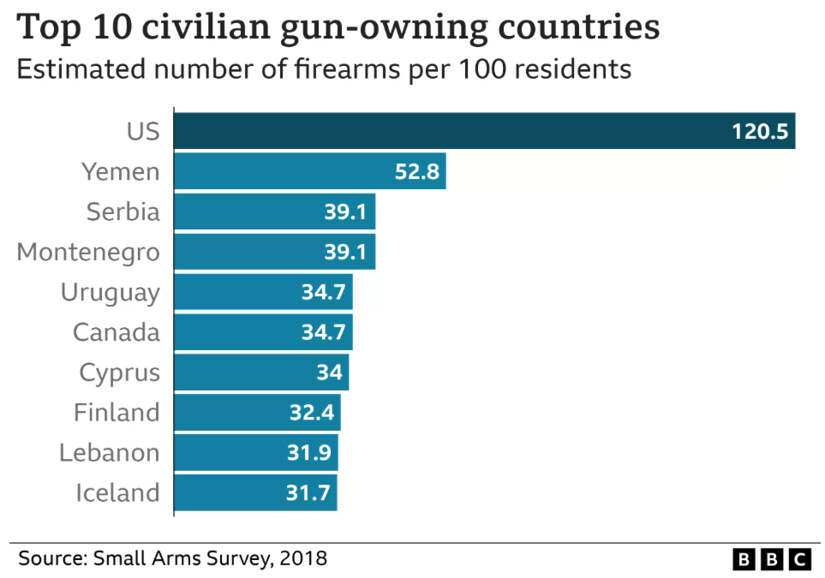 2018 Small Arms Survey, from the BBC.
2018 Small Arms Survey, from the BBC.Another key factor potentially contributing to the uptick in violent crime rates is the COVID-19 pandemic. People who were already disadvantaged, those dealing with poverty, unemployment, health issues, and a range of other socioeconomic problems were most impacted by the pandemic.
Moreover, there was a breakdown in community engagement. People weren’t able to come together and celebrate or grieve. And the pause on community gatherings also put a pause on community programs specifically designed to prevent violence.
Unemployment programs have historically proven to be excellent ways to decrease rates of violence in a neighborhood. Those programs simply couldn’t function during the pandemic, and these factors affect all types of communities.
So, guns and socioeconomic insecurity contributed to the rise in violent crime. The question now is, what are solutions that work to reduce crime?
Investing in our communities can help build long-term public safety.
Community investment can look like many things, and we’ve seen what works.
For instance, in Oakland, CA, homicides and fatal/non-fatal shootings were nearly cut in half in 2019 as Oakland began a community violence prevention program in 2012. This seems to be the key to keeping communities safe: investments in community programs that curb violence, engage the community and promote job security.
Questions? Put them in the comments!
Improve mental health accessibility in our town! Donate to Morristown, NJs local mental health accessibility fund today!
 Scan the QR code to donate!
Scan the QR code to donate!*The 2022 Local News Fund is a program administered by the Local Media Foundation, a 501(c)(3) organization affiliated with the Local Media Association. The program’s purpose is to allow independent and family-owned news organizations to solicit tax-deductible donations from their communities for journalism projects focusing on critical local issues. Contributions to this program are tax-deductible to the full extent of U.S. law; please consult a tax advisor for details.